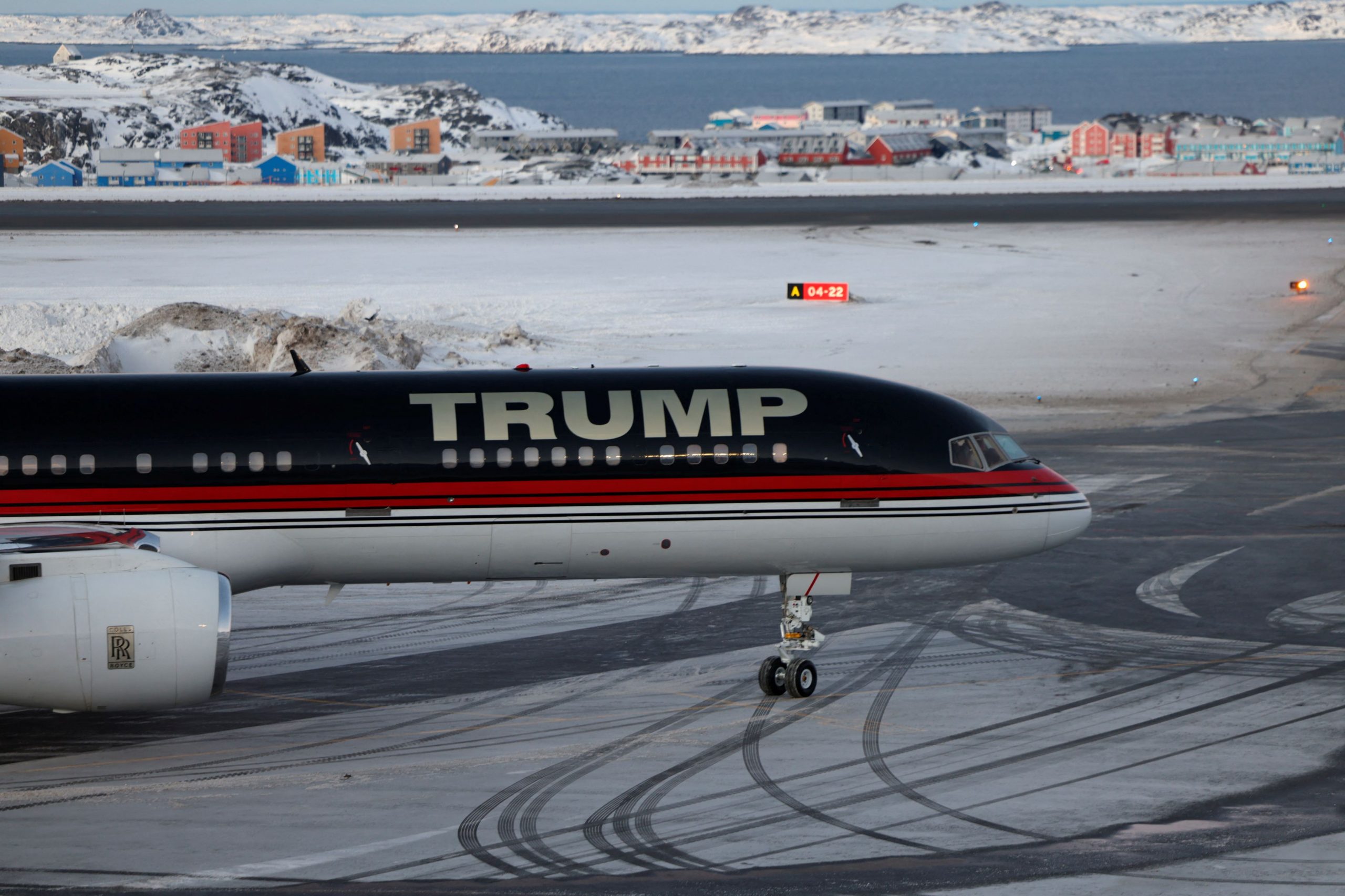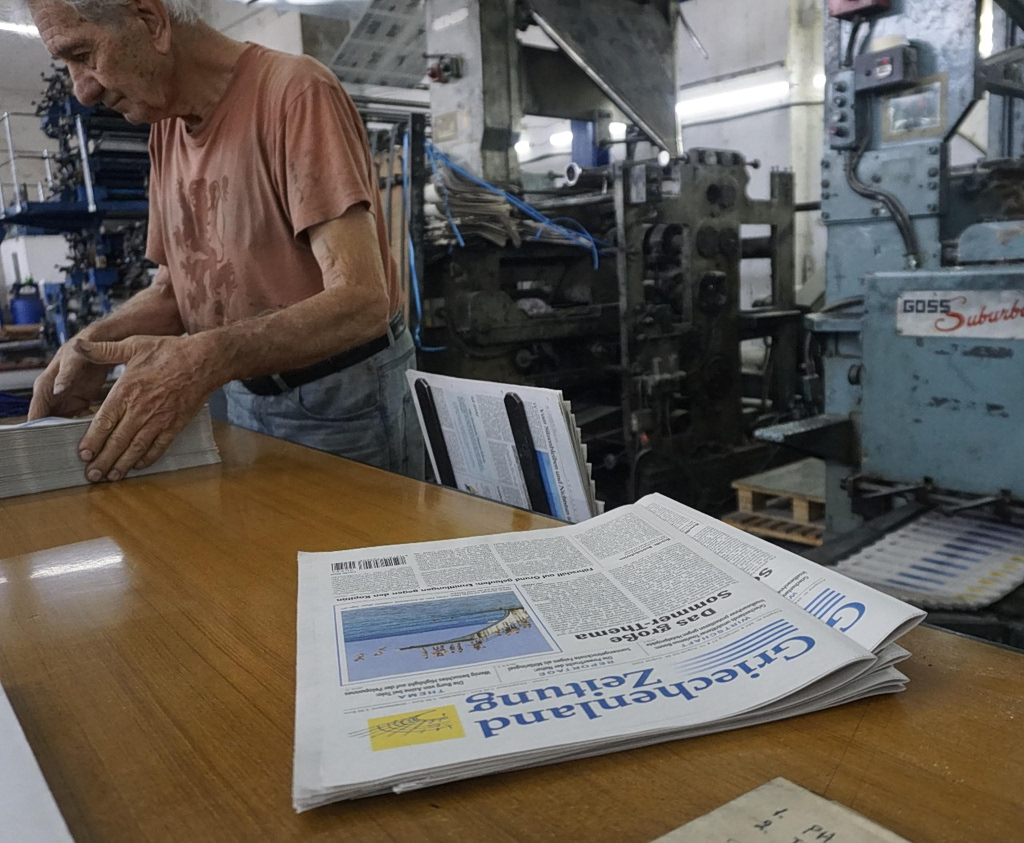WASHINGTON—President-elect Donald Trump ’s calls to take control of Greenland, Canada and the Panama Canal reflect his fascination with a 21st-century version of an old idea—that great powers should carve out spheres of influence and defend their economic and security interests by imposing their will on smaller neighbors.
In a press conference Tuesday, Trump outlined a second-term foreign-policy agenda that rests not on global alliances and free trade but on economic coercion and unilateral military might, even against allies.
With the Panama Canal and Greenland, he suggested he could use force to take them over. With Canada, he suggested he would hit the U.S.’s northern neighbor with extreme tariffs, leaving it no choice but to submit to annexation.
“Canada and the United States, that would really be something,” Trump said. “You get rid of that artificially drawn line and you take a look at what that looks like and it would also be much better for national security.”
Taking control of Greenland, Canada and the Panama Canal through military or economic force would be a departure from decades of U.S. foreign policy as pursued by presidents of both parties. If Trump does even a portion of what he described—each of which is extremely unlikely—it could mean far-reaching changes in America’s global role, emboldening adversaries and forcing allies no longer assured of Washington’s backing to seek new security and economic arrangements, analysts said.
For Trump, the case for a sweeping reorientation of foreign policy rests on a stew of long-espoused and even conflicting convictions—that even close allies are treating the U.S. unfairly, that America gave away the canal to Panama for nothing, and that China is moving into what should be the U.S.-dominated Western Hemisphere.
Asked by a reporter if he would commit to not using military force or economic pressure in his quest to acquire the territories, Trump replied: “No, I can’t assure you on either of those two. But I can say this, we need them for economic security.”
Trump’s willingness to broach such ideas and his disregard for bipartisan doctrines left some aghast.
“We just haven’t seen anything like this, at least in my lifetime, from a president of the United States,” said Chuck Hagel , the former Republican senator and defense secretary during the Obama administration. “This is very, very autocratic, and that is why it is so concerning what Trump is saying and how he’s acting.”
“When our strongest allies and partners lose confidence in us, no good is going to come from all of that,” Hagel said. “China and Russia are looking at all this, like, ‘Go ahead, Mr. Trump, keep talking.’”
During the press conference, Trump laid out other ideas, too, such as renaming the Gulf of Mexico as the “Gulf of America” and demanding members of the North Atlantic Treaty Organization spend 5% of gross domestic product on defense, a level even the U.S. doesn’t meet. But his comments about Greenland, Canada and Panama were the most provocative and drew the most attention.
Some current and former Trump advisers said those comments shouldn’t be taken at face value, insisting they aren’t as far outside mainstream foreign-policy thinking as they sound.
“What [Trump] is trying to do is reinvigorate this focus on what are the outer boundaries of the Western Hemisphere, and defending them against great power competitors,” said Alexander Gray , who served as chief of staff on the Trump White House National Security Council.
Trump’s vow to annex Canada is bluster aimed at gaining leverage before trade negotiations with Ottawa, some advisers say. His threat to take back the canal is a ploy to secure lower prices for U.S. ships sailing through Panama, and his fixation on acquiring Greenland is about gaining access to rare-earth minerals and denying them to China, they add.
“There is this idea that our number-one priority is the defense of the hemisphere, and that China and Russia are coming into our backyard,” Gray said. “You have to see Greenland and Panama in that context.”
To anyone alarmed that Trump might actually do what he says, they point to his pledge during his first run for the White House to make Mexico pay for the wall he wanted to construct along the U.S. southern border—an idea that he stopped talking about as the difficulties of making it happen became clear and other issues took priority.
Yet a second-term Trump might prove more focused on sweeping moves that he often felt blocked by his advisers from pursuing in his first administration. He faces more-complex foreign-policy challenges, including the war in Ukraine and the rising threat from Iran’s nuclear program, than those he confronted during his first term—making seemingly simplistic solutions even more alluring.
Trump has refused to abandon the notion of buying Greenland, one he first raised in 2019, even though its leaders and officials in Denmark, who oversee its foreign affairs, have repeatedly said it is not for sale and that annexation is out of the question.
Trump’s son, Donald Trump, Jr. , arrived in Greenland on Tuesday with future White House staffers, including James Blair , the incoming White House deputy chief of staff for legislative, political and public affairs who some aides said could be key to any future negotiations.
Some of his advisers acknowledge a sale is unlikely, but an expansion of U.S. presence on the island, through economic investments and a larger military footprint, is a possibility, they say. A decades-old treaty between Denmark and the U.S. gives the Pentagon access to an Arctic base in southern Greenland with an airfield, as well as radar and other equipment used for detecting possible missile launches.
Trump’s advisers are interested in expanding that U.S. presence to counter the growing influence of China and Russia in the Arctic, and believe Washington could negotiate a relationship similar to that enjoyed by tiny island nations in the Pacific, called a compact of free association.
Such an agreement would allow the State Department to negotiate expanded economic and military ties without Denmark surrendering sovereignty. Congressional approval would be required for any such compact.
Trump’s interest in re-establishing a bigger U.S. presence at the Panama Canal harks back to the traditional Republican Western Hemisphere focus of the late 1970s and early 1980s, which many conservatives believe was abandoned when the U.S. expanded its role in the Middle East. The U.S. and Panama agreed in 1977 to turn the canal over to Panamanian control, which occurred in 1999 after a period of joint administration.
The waterway is currently administered through the state-run Panama Canal Authority, but two of its seaports have long been run by a Hong Kong-based company, an arrangement Trump says is unacceptable.
The Panama Canal “was built for our military,” and “we gave the Panama Canal to Panama, we didn’t give it to China,” he said. “They have abused that gift.”
Trump advisers are currently exploring ideas to entice Panama to return control of the canal, according to people close to the incoming president, including Panama’s inclusion in existing trade deals, and U.S. investments in the country. A military operation to retake the canal would be potentially a more difficult operation than the 1989 U.S. invasion to depose Panamanian strongman Gen. Manuel Noriega . At the time, the U.S. troops were still based in the canal zone.
Trump insisted Tuesday that “economic force” would eventually lead Canada’s 40 million people and nearly four million square miles to become the 51st U.S. state. That isn’t going to happen, departing Canadian Prime Minister Justin Trudeau posted to X on Tuesday: “There isn’t a snowball’s chance in hell that Canada would become part of the United States.”
Amending the Canadian Constitution to dissolve the country and join the U.S. would require unanimous approval from Canada’s Senate, House of Commons and provincial legislatures. A December Leger poll showed 13% of Canadians wanted their country to become America’s 51st state, with 82% opposed. Both chambers of the U.S. Congress would also need to authorize a new state.
Canada, the U.S.’s second-largest trade partner, has long been a target of Trump’s complaints about unfair economic relations, one he couples with criticism that Ottawa is a laggard in providing funding for NATO.
Gray, the former Trump official, said the president-elect’s recent concerns stem from Canada falling well short of spending 2% of its GDP on defense, as NATO allies have committed to do. “They are NATO’s most feckless member, and it is embarrassing and it is a threat to our security, because they can’t uphold their obligations in our joint hemisphere,” he said.
Trump railed against Canada’s participation in a joint venture with the U.S. and Finland to build and maintain icebreakers, a move all three nations believe is important to keep up with China and Russia in the Arctic. “We don’t really want to have a partner in the buying of icebreakers,” Trump said.
Advisers close to Trump acknowledge that annexation of Canada is unlikely, and instead suggest the comments are rooted in Trump’s aggressive negotiating style, particularly at this time of transition in Canada, where he seeks to put the incoming prime minister on notice.
“We’ve been good neighbors, but we can’t do it forever, and it is a tremendous amount of money,” Trump said during the news conference. “That is OK to have if you’re a state, but if you’re another country, we don’t want to have it.”
Write to Vivian Salama at vivian.salama@wsj.com and Alexander Ward at alex.ward@wsj.com



